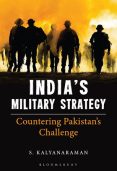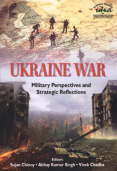Ukraine War: Military Perspectives and Strategic Reflections
- Publisher: Pentagon Press
The idea for this book emerged in the course of discussions during the initial stages of the Ukraine War. It was, however, realised that any attempt at drawing lessons prematurely could lead to misleading conclusions. Accordingly, instead of absolutist conjectures, the book is an exercise in identifying broader trends.
Much water has flown under the bridge since then. Along the way, the world has been introduced to an array of new sophisticated weapons, missiles and drones that question the very relevance of established battlefield platforms such as tanks, for instance. In this volume, the contributors address several aspects of the war in an attempt to explain, elaborate and challenge existing notions with the larger aim of drawing lessons for policymakers and professionals alike.
Ukraine War: Military Perspectives and Strategic Reflections, presents a comprehensive assessment of the ongoing conflict. Divided into five sections, the book delves into the geopolitical backdrop of the conflict, highlights its operational narrative, dissects the components of military power, explores the impact of disruptive technologies and examines the strategic ramifications of this ongoing war.
- ISBN: 978-81-968722-8-1 ,
- Price: ₹ 1495/-
- E-copy available








